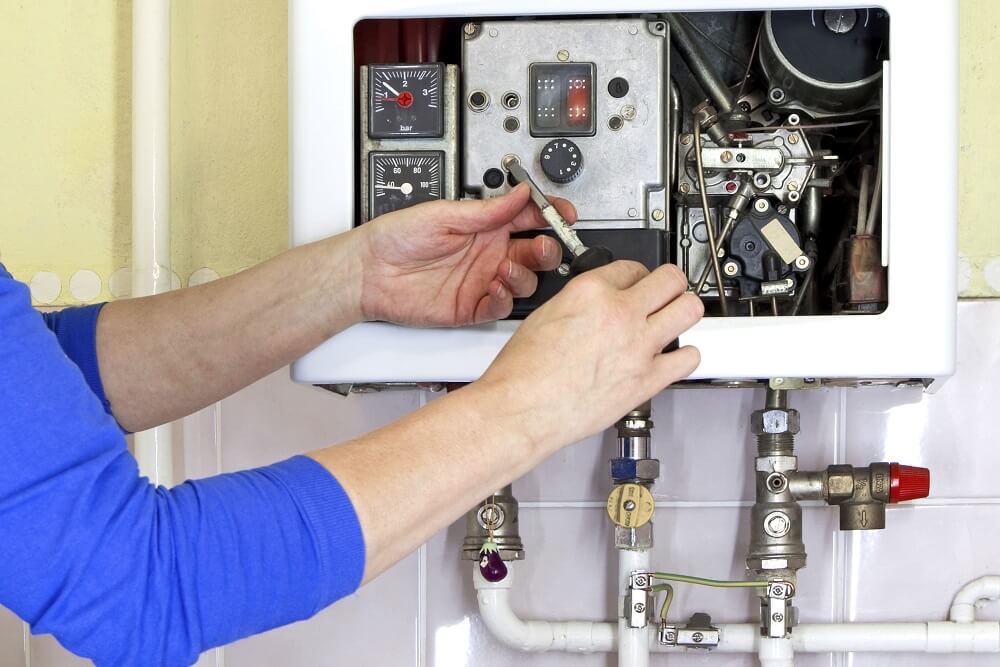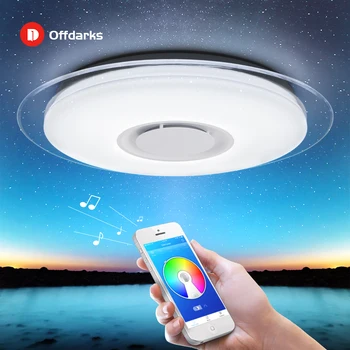USRP2 novšia verzia USRP1 a USRP
![]()
Väčšiu šírku pásma (14-bitov 100 MS / s vs 12-bitov 64 MS / s)
Používa Gigabit Ethernet preto dlhé vzdialenosti je možné ( pozri Wikipedia ) medzi USRP2 a súvisiace výpočtovej techniky
Zvýšená schopnosť vykonávať komplexné funkcie, ako je využitie signálu GPS. To môže byť užitočné pre integráciu GPS prijímač funkciu do širokopásmový hydroxl / vodík riadok monitor, kde je signál GPS sa stáva frekvencia referenčné, čo umožňuje presnejšie meranie frekvencie a teda určiť frekvenciu Dopplerov posun v dôsledku pohybu vzdialenej rádiové zdroje v pomere k krajine.
Nevýhody:
V súčasnej dobe neexistuje žiadna podpora pre Windows alebo Mac OS. Môže byť naprogramovaný na platforme Linux.
Vysoké náklady. Základný balíček zahŕňa:
Základná doska, Enclosure,
SD karty, 2 káble RF,
Ethernet Cable,
Napájania,
Hardware balíček.
Daughterboard moduly nie sú zahrnuté, ale sú rovnaké ako pre USRP1.
Od “plávajúce bodové zdroje pre usrp1 má rozsah [-32768,0 – 32767,0], zatiaľ čo pre usrp2 je automaticky nastavený na [-1,0 až 1,0]. To bude mať vplyv na váš predok rozmedzí škálovanie alebo softvér AGCS. “
{youtube}4wYHiYVV0EQ?{/youtube}
A software defined radio is exactly what its name suggests: a radio device whose operational characteristics are defined by its software rather than by its hardware. Components which are typically implemented in hardware such as filters, detectors, modulators/demodulators, are instead implemented with software for general purpose processors which can be executed on most personal computers. This provides the SDR huge flexibility with respect to operating frequencies, supported protocols, waveforms etc meaning that virtually anything can be implemented. Practical implementations of such devices have only recently become feasible due to the rapid advance in electronics. SDR has been deemed by many as the future of telecommunicatio
Who Uses GNU Radio?
I was once asked to justify expenditures on GNU Radio based projects. So, I began compiling a list of known GNU Radio projects, and I used this list to show that GNU Radio is of interest to a lot of folks who are doing interesting things. I created this list by reading the mailing list traffic, and writing down names associated with projects. I had plans to turn this list into a “Who’s Who in GNU Radio” that would be put up on the wiki, and edited by the community to ensure correctness. Ideally, someone would build a database out of this information so that an interested party could search by technology or name or institution etc… However, I haven’t had the time to do that.
I’ve attached the list with no guarantee of correctness. I hope it helps, but caveat emptor.
On Mon, 2006-10-09 at 16:10 +0800, Jeremy Chew wrote:
My research group is new to GNU Radio and I like to know what groups out there are using this. I’m aware that there’s the ORBIT testbed in Rutgers University and the work by University of Paderborn Computer Networks group. If you happen to know more or are aware of what websites are useful for me, please let me know.
> Jeremy Chew
> Discuss-gnuradio mailing list
> Discuss-gnuradio gnu.org
> http://lists.gnu.org/mailman/listinfo/discuss-gnuradio
See John Jakey’s page for his links
http://staff.washington.edu/~jon/gnuradio.html
GNU Radio main page
http://www.gnu.org/software/gnuradio/
The starting point
GNU Radio Wiki
http://comsec.com/wiki
General information
GNU Radio Mailing list archives
http://lists.gnu.org/archive/html/discuss-gnuradio/
Search here first for all of your GR/USRP questions
GNU Radio Mailing List
http://www.gnu.org/software/gnuradio/mailinglists.html
Get on it ASAP! Very active. You’ll learn a lot just by reading the daily activity.
Matt Ettus
http://www.ettus.com/
For all your USRP needs
Chuck Swiger´
http://webpages.charter.net/cswiger/
Lots of good stuff. Many full applications and scripts.
kd7lmo
http://www.kd7lmo.net/ground_gnuradio_install.html
Ground station for high-altitude balooning
Installation scripts, OTA data captures
Dawei Shen
http://www.nd.edu/~dshen/GNU/
Excellent place to start.
Tutorials, tutorials, tutorials
Eric Blossom
http://www.comsec.com/software-radio.html
Not much GR stuff here. But, hey, he’s the man.
Passive Radar
http://comsec.com/gnuradio-project-2006.html
http://events.ccc.de/congress/2005/fahrplan/attachments/673-slides-passive-radar.pdf&e=10401
Lee Patton
http://www.pattoncentral.org/?cat=11
Installation guide, and search plugin. Active radar.
David Carr
Rice University
http://oscar.dcarr.org/ssrp/
Simple Software Radio Peripheral
Krys Kamieniecki
http://kamieniecki.com/krys/gps/
Developing kkGPS, a pure software defined GPS receiver
Lamar Owen
http://www.lamarowen.net/pgallery/album?album_id=2060
Cool USRP Case
Jamey Sharp
http://svcs.cs.pdx.edu/trac/wifi/
Implementation of IEEE 802.11 nwtworking standards imirkin
http://web.mit.edu/imirkin/www/gnuradio/bpsk.html
BPSK and Costas Loop stuff
Prateek Mohan Dayal’s Thesis
http://www.geocities.com/pmd_iitgw/thesis.pdf
Senior year thesis.
SOFTWARE BASED NTSC SIGNAL PROCESSING
John Jacky
http://staff.washington.edu/~jon/gr-osx/gr-osx.html
http://staff.washington.edu/~jon/gnuradio.html
Lots of stuff
GNUR Radio under OS X
Magnetic Resonance Force Microscopy
http://lists.gnu.org/archive/html/discuss-gnuradio/2005-01/msg00232.html
http://courses.washington.edu/goodall/MRFM/index.html
University of Paderborn
Holger von Malm, Stefan Valentin
http://typo3.cs.upb.de/en/research-group/research-group-computer-networks/projects/gsr.html
http://typo3.cs.uni-paderborn.de/fileadmin/Informatik/AG-Karl/Pubs/TR-RI-06-273-gnuradio_testbed.pdf
Complete transceiver chain including a simple PHY, the ALOHA MAC protocol and the send-and-wait ARQ
running on GNU Software Radio.
University of Cape Town, Radar Remote Sensing Group
http://rrsg.ee.uct.ac.za/projects/softradar/
Software Defined Radio/Radar project
Martin Dudok van Heel (Dvh)
http://www.olifantasia.com/pub/projects/gnuradio/mdvh/passive_radar/
Passive Radar code
http://www.olifantasia.com/pub/projects/gnuradio/mdvh/mingw/binary-installer/gnuradio-with-usrp/
Windows version
Tracey
http://www.tracey.org/wjt/temp/gnuradio-wxapt/noaa-17-03260415-norm.jpg
Getting weather satellite feeds
Juan Domenech Fernandez
http://www.domenech.org/homebrew-sdr/receiver-1.htm
Is using GR, but don’t see GR related posts
Larry Doolittle
http://recycle.lbl.gov/~ldoolitt/xguff.html
Xperimental Gnu USB FPGA Framework
MIT Viral Media Lab
Jamey Cooly
http://viral.media.mit.edu/wiki/tiki-view_blog.php?blogId=3
Install under Ubuntu
http://alumni.media.mit.edu/~jcooley/gr_experiments/
GNU Radio Experimeents
Department of Computer Science University of Illinois at Urbana-Champaign
http://srg.cs.uiuc.edu/swradio/
Security of Software Defined Radio
Department of Computer Science University of Illinois at Urbana-Champaign
Raquel L. Hill, Suvda Myagmar, Roy Campbell
http://choices.cs.uiuc.edu/~myagmar/hill_threat_wwc05.pdf
Threat Analysis of GNU Radio Software
NCSA
http://ner.ncsa.uiuc.edu/sdr/
Receiver
Josh Lackey
http://noether.uoregon.edu/~jl/gmsk/index.html
GMSK code
NCASSR (UIUC)
http://www.projects.ncassr.org/sdr/rf_samples/index.html
http://www.projects.ncassr.org/sdr/rf_samples/tvrfplots.html
NWACC
http://nexp.cs.pdx.edu/~sdr/
Home
https://projects.cecs.pdx.edu/~icarroll/SoftwareGPSCorrelator/
GPS Correlator
http://www.ecsl.cs.sunysb.edu/fir/
An Implementation of a FIR Filter on a GPU
http://www.ee.nmt.edu/~dbaird/ee446-project.pdf
FM Receiver project
Clark Pope
http://www.drs-ss.com/
doing 802.11b with DBS Rx
David Bennington
http://www.keystoneradio.com/grGPS.html#GPSAsics
GPS Receiver
NCSU
CSC-791V
Physical Layer Encryption of Wireless Communication Signals
http://www4.ncsu.edu/~kakandek/stuff/csc791v/practicalProblems.html
Greg Troxel, David Lapsley
BBN Technologies
http://lists.gnu.org/archive/html/discuss-gnuradio/2006-03/msg00421.html
http://www.informationweek.com/story/showArticle.jhtml?articleID=174907945
Cognitive radio networks Vivek Raghunathan, BBN Tech.
ADROIT Project getting GNU Radio to be able to receive and decode IEEE 802.11 frames and inject these frames into the NetBSD kernel networking stack.
Virginia Tech
http://www.vtnews.vt.edu/story.php?relyear=2005&itemno=995
Cognitive Radio
Interfacing USRP with OSSIE
UCLA
Tad Dreier Graphical programming of GNU Radio w/ Ptolemy
http://www.ee.ucla.edu/~tjdreier/gnuradio_ptolemy.jpg
U. Michigan
Achilleas Anastasopoulos
http://www.eecs.umich.edu/~anastas/
Trellis coding Chris (Robert) Roberts Case Western Reserve Univ. MATLAB/Simulink, GNU Radio/USRP laboratory exercises Companies
———————
http://metricsystems.com/ (John Clark)
http://www.drs-ss.com/ (Clark Pope)
http://www.bbn.com/
Sensus Analytics/ Path Intelligence Tom Rondeau Virginia Tech QPSK transceiver, Dr. R. Heath
Univ. of Texas
http://www.ece.utexas.edu/undergrad/464projects.html#gnu
PathIntelligence
http://www.pathintelligence.com/
Track pedestrians using GNU Radio / USRP
Naveen Manicka
Univ. of Deleware
http://www.cis.udel.edu/~manicka/Resume.html
Implementing a custom MAC protocol on a GNURadio-based network testbed
Schools using GR/USRP
———————-
- MIT
- Case Western Reserve
- Notre Dame
- Portland State
- NCSU
- Wright State
- Virginia Tech
- UCLA
- University of Michigan
- Univ. Illinois at Urbana Champaign
- Univ. Illinois at Chicago
- Telematik, Techn. University Graz, Austria
- Univ. of Texas
- University of Utah (USRP developed under NSF grant there)
- Univ. of Deleware
- Agencies using/funding GR/USRP
———————-
DARPA AFR Radio Astronomy places NASA AMES
ns, as most devices are expected to be SDRs in the near future.
Current applications include the Joint Tactical Radio System (JTRS) of the US Army, as well as many amateur radio or home use applications, replacing the, much slower, computer sound cards which were used earlier. Certain implementations, such as the USRP which we will discuss below, are also widely used for academic and industrial research programs, due to the flexibility they provide in contrast to hardware transceivers.
{youtube}6qRTUT5GvLY?{/youtube}
Universal Software Radio Peripheral (USRP)
The USRP provides relatively cheap hardware for building a software defined radio. It has an open design, with schematics and drivers freely available. The GNU radio software project provides ready-to-use implementations of many well known analog and digital radio protocols, such as FM radio and digital television receivers. In terms of hardware, the USRP includes some high speed 14 bit digital-to-analog (DAC) and 12 bit analog-to-digital (ADC) converters, an Altera Cyclone FPGA, USB 2.0 interface and 4 extension sockets for daughterboards. These daughterboards cover some more specific needs. For example, transceivers operating at frequencies ranging from DC (0Hz) up to more than 4GHz are available, covering almost the whole usable radio spectrum.
Recent Developments
The USRP2 was introduced in 2008. This board has a Xilinx Spartan 3 FPGA, gigabit ethernet, higher resolution and faster DAC and ADC modules. Its drawback is that the software tools from Xilinx which are compatible with the Spartan FPGA are not available for free. It is important to note that this platform is not intended to replace the initial USRP, they are still sold in parallel. The HPSDR (High Performance Software Defined Radio) is a project that uses a 16-bit 135MSPS analog-to-digital converter (instead of 14-bit @ 100MSPS of the USRP2) that provides performance over the range 0 to 55 MHz comparable to that of a conventional analogue HF radio.













